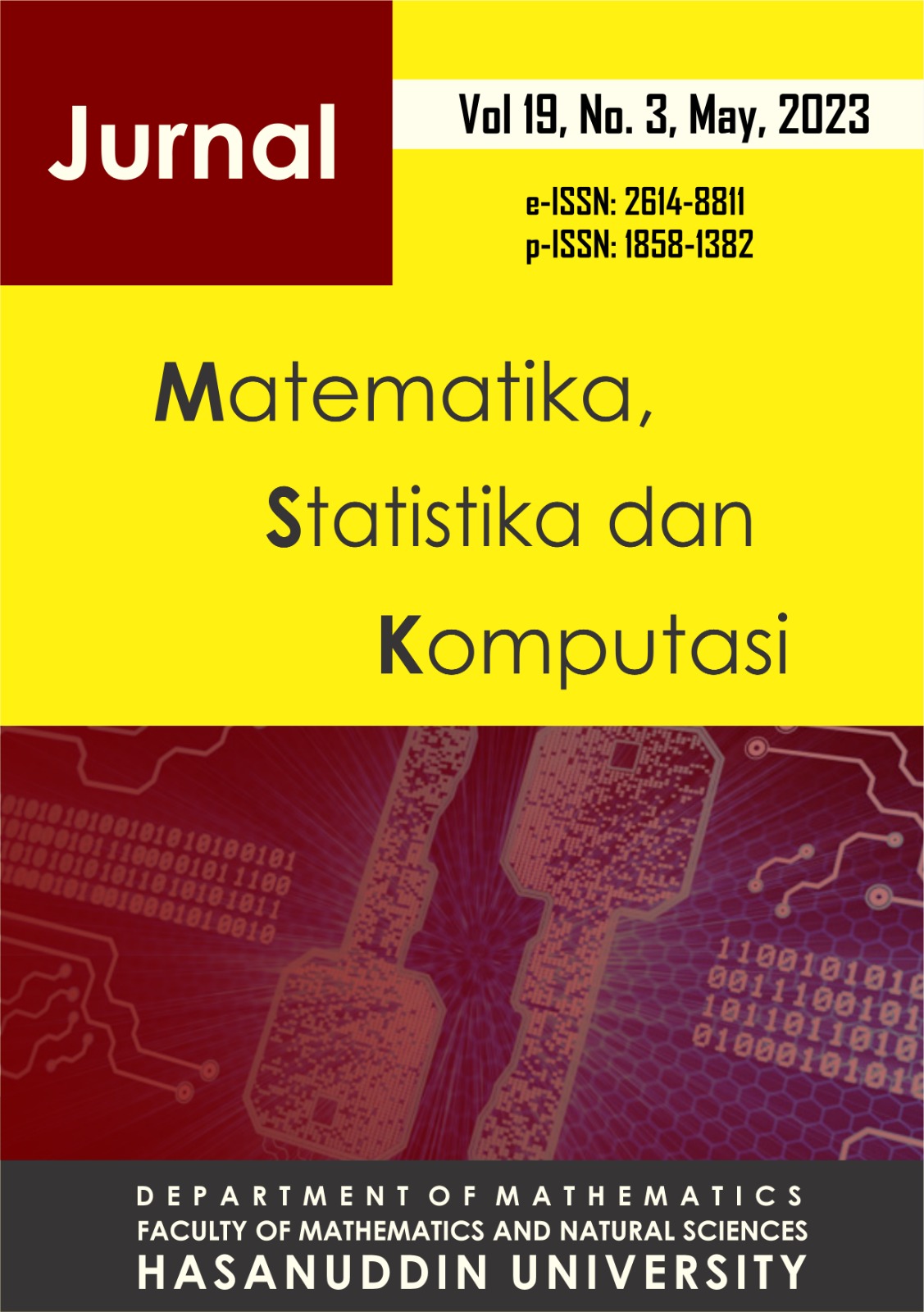Estimation of Optimal Portfolio Return and Risk on the LQ-45 Index for the 2020-2022 Period Using the Capital Asset Pricing Model (CAPM)
DOI:
https://doi.org/10.20956/j.v19i3.25005Keywords:
Capital asset pricing model, optimal portfolio, return, riskAbstract
Stocks are one of the financial instruments with fluctuating prices that cannot be predicted accurately, so every investor must be able to estimate returns and risks so that investment objectives can be achieved. The purpose of this study is to determine the estimated return and risk of stock investment through the formation of an optimal portfolio and show that the resulting portfolio is capable of increasing the chances of achieving investment objectives. This research uses stocks listed on the LQ-45 Index for the 2020-2022 period, which can form an optimal portfolio. The method used to form an optimal portfolio is the capital asset pricing model (CAPM) method. The results of this study indicate that there are 14 out of 30 issuers that form an optimal portfolio with an expected portfolio return of 0.52% and a portfolio risk level of 0.26%. The results obtained from this method indicate that by forming an optimal portfolio, investors can diversify the risks that will be obtained with a more optimal rate of return when compared to the rate of return generated by each stock.
References
Batubara, Y., 2020. Analisis Maslahah: Pasar Modal Syariah Sebagai Instrumen Investasi Di Indonesia. HUMAN FALAH: Jurnal Studi Ekonomi dan Bisnis Islam, 2(7).
Bodie, Z., & Kane, A., 2020. Investments.
Dewi, G.A. & Vijaya, D.P., 2018. Investasi dan pasar modal Indonesia. Rajawali Pers, Depok.
Finance, Y., 2022. Yahoo Finance - Stock Market Live, Quotes, Business & Finance News. https://finance.yahoo.com/. [21 Desember 2022]
Hartono, J., 2022. Portofolio Dan Analisis Investasi. UGM Press, Yogyakarta.
Husnan, S. & Pudjiastuti, E., 2012. Dasar-dasar Manajemen Keuangan. Edisi Keenam. UPP STIM YKPN, Yogyakarta.
Husnan, S., 2005. Dasar-dasar Teori Portofolio, dan Analisis Sekuritas. Edisi Keempat. UPPSTIMYKPN, Yogyakarta.
Lintner, J., 1965. Security prices, risk, and maximal gains from diversification. The journal of finance, 20(4), 587-615.
Masri, Z. A. H., Susanto, R., & Romadona, M., 2017. Pengaruh Laba terhadap Harga Saham pada Indeks Harga Saham LQ 45. JABE (Journal of Applied Business and Economic), Vol. 3(3), 148-160.
Mossin, J., 1966. Equilibrium in a capital asset market. Econometrica: Journal of the econometric society, 768-783.
Pham, C. D. & Phuoc L.T., 2020. Is estimating the Capital Asset Pricing Model using monthly and short-horizon data a good choice? Heliyon, Vol. 6(7), 1-14.
Putri, L. P., 2021. Pengaruh Literasi Keuangan Terhadap Keputusan Investasi Melalui Perilaku Keuangan Sebagai Variabel Moderating. In Seminar Nasional Teknologi Edukasi Sosial Dan Humaniora (Vol. 1, No. 1, pp. 772-778).
Rusiadi, A., & Ade Novalina, S. E., 2017. Keakuratan Metode Capital Asset Pricing Model (Camp) Dan Arbitrage Pricing Theory (Apt) Dalam Memprediksi Return Saham Pada Bank Persero (Bumn) Di Indonesia. Jurnal, 10.
Samsul, M., 2006. Pasar Modal dan Manajemen Portofolio. Erlangga, Jakarta.
Sharpe, W. F., 1964. Capital asset prices: A theory of market equilibrium under conditions of risk. The journal of finance, 19(3), 425-442.
Yakhub, A. M., & Kristanti, I. N., 2022. Pengaruh Kinerja Laporan Keuangan Terhadap Return Saham pada Perusahaan yang Tergabung dalam Indeks LQ45 Tahun 2018-2020. Jurnal Ilmiah Mahasiswa Manajemen, Bisnis dan Akuntansi (JIMMBA),Vol. 4(4), 567-584.
Downloads
Published
How to Cite
Issue
Section
License
Copyright (c) 2023 Author and publisher

This work is licensed under a Creative Commons Attribution 4.0 International License.

This work is licensed under a Creative Commons Attribution 4.0 International License.
Jurnal Matematika, Statistika dan Komputasi is an Open Access journal, all articles are distributed under the terms of the Creative Commons Attribution License, allowing third parties to copy and redistribute the material in any medium or format, transform, and build upon the material, provided the original work is properly cited and states its license. This license allows authors and readers to use all articles, data sets, graphics and appendices in data mining applications, search engines, web sites, blogs and other platforms by providing appropriate reference.







